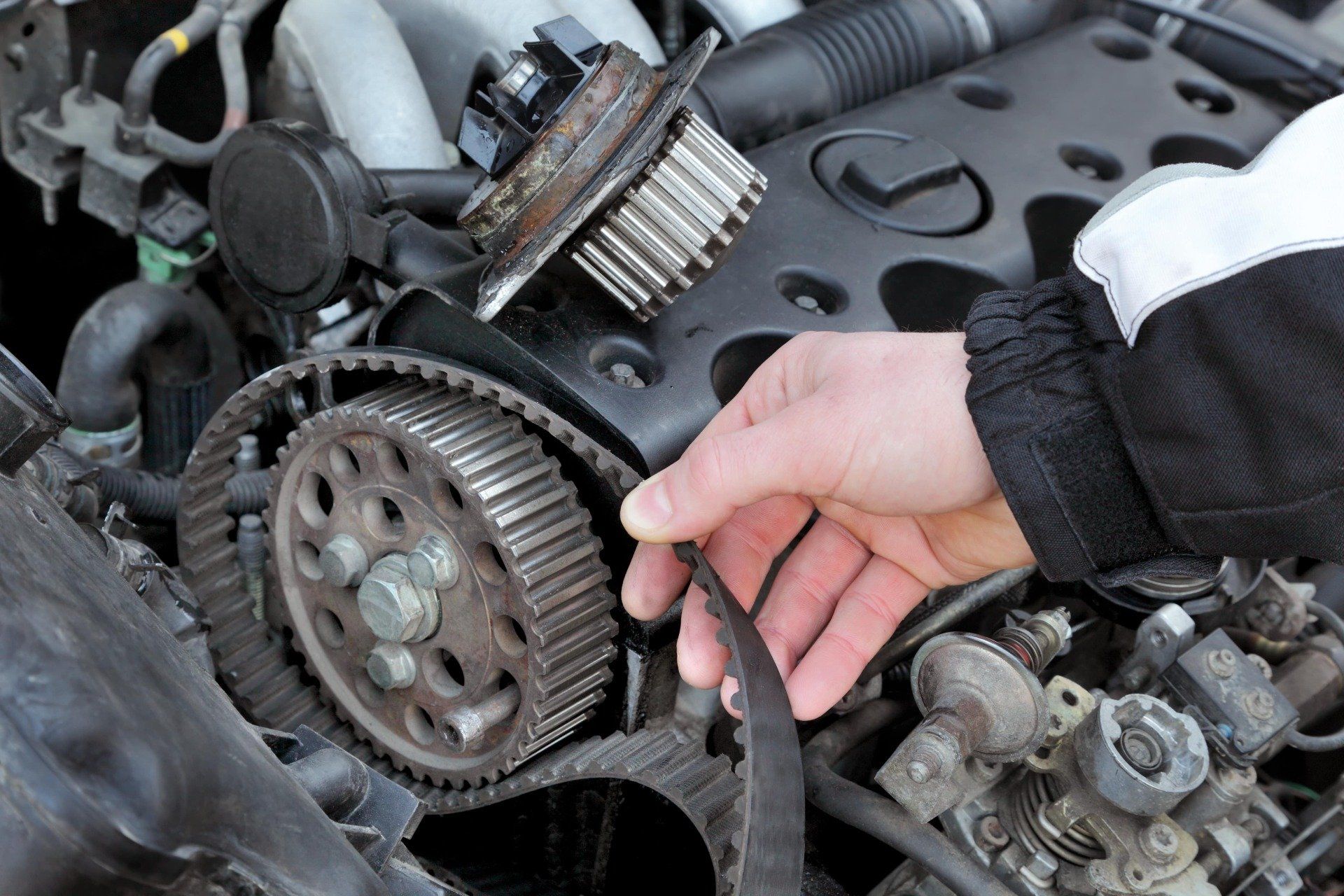What Happens When a Timing Belt Breaks While Driving?
Your timing belt is an essential component of your car's engine because it ensures that the crankshaft and camshaft work in perfect synchronization. Do you know what happens when a timing belt breaks while driving? Should this occur, you have a serious problem and will need to go to a mechanic as soon as possible. You should look out for signs that your timing belt is about to break and have it checked out before it can snap and cause any damage. You must have the belt replaced before it breaks. If you notice any signs that it is wearing out, schedule a timing belt replacement in Marietta, Georgia. Let's take a closer look at what happens when a timing belt breaks and why it can be disastrous for your car.
What Causes a Timing Belt to Break?
So, what causes a timing belt to break in the first place? Like many parts of your car, timing belts wear out over time. They’re made of reinforced rubber and are constantly exposed to heat, tension, and motion while the engine is running. Eventually, they can crack, fray, or lose tension.
One of the most common reasons a timing belt breaks is simply age or high mileage. Most manufacturers recommend replacing the timing belt every 60,000 to 100,000 miles, depending on the vehicle. But other factors—like oil leaks, overheating, or faulty components like tensioners and pulleys—can cause the belt to fail much sooner.
If your car has an oil leak near the timing belt, the rubber can weaken quickly. And if the belt starts to slip or loses alignment, it may jump a tooth—or worse, snap altogether. In an interference engine, that can mean serious damage almost instantly.
To avoid all of that, keep an eye (and ear) out for warning signs—unusual noises from the engine, visible wear on the belt if you're able to inspect it, or a check engine light that just won’t go away. Once those signs start showing up, it’s best not to wait. A broken timing belt doesn’t just leave you stranded—it could leave you with a damaged engine that’s expensive to repair.
Timing Belt vs. Timing Chain: What’s the Difference?
You might have heard both terms—timing belt and timing chain—and wondered what the difference is. While they both do the same job of keeping your engine’s valves and pistons moving in sync, they’re not the same.
A timing belt is made of rubber and usually needs to be replaced somewhere between 60,000 and 100,000 miles, depending on your vehicle. It runs quietly but will wear out over time, especially if exposed to heat or oil leaks.
A timing chain is made of metal and tends to last much longer, often the lifetime of the engine. But when it wears out, it can be more expensive to repair, and it might make more noise than a belt.
Not all cars have the same setup, so if you’re not sure which one your vehicle uses, just ask your mechanic. Either way, it’s important to catch issues early, because whether it’s a belt or a chain, failure can mean serious engine damage.
How Do You Know If Your Timing Belt Broke While Driving?
Firstly, how would you even know when your timing belt breaks? It's quite simple, really: your car cannot run at all without a timing belt. If the belt breaks while you are on the road, the car will break down immediately - and your engine can experience severe damage. You need to look out for signs and symptoms of a weakening timing belt so that you can take action before it is too late. These include loud clicking sounds coming from your engine, squealing sounds, and yourengine failing to start at all.
Here are three signs of the most common signs to look out for. If you start to notice any of them, take your car to an auto repair professional as soon as possible.
1. Ticking Noise
When the belt is starting to wear out, there can be a tell-tale ticking noise. This sound could also have other meanings. Either way, your engine could be in trouble if you don’t have it looked at immediately.
2. Engine Fails to Start
When you turn the key in the ignition and the timing belt has broken, you will hear the starter, but with no belt to drive the crankshaft, the engine won’t be able to start.
3. Engine Misfiring
The timing belt synchronizes the valves and cylinders in your engine. If in the rare instance it skips a tooth it may cause one or more of the cylinders to open or close too early. This will cause the engine to run poorly and set a check engine light. If on the rare occasion that happens, please have your car checked out straight away. There could be other reasons for misfires - and all of them could mean major problems for your engine.
If you start to notice any of these warning signs, take your car to
Professional Auto Repair in Marietta as soon as possible.
Can You Drive with a Broken Timing Belt?
Your car cannot run with a broken timing belt. By the time the belt snaps, the damage is already done, and you will not be able to drive at all. You will need to have the vehicle towed to an auto repair workshop. The question is, how long can you drive with a bad timing belt? Once you know that your timing belt is faulty - but it has not yet broken - can you still drive the car? It is possible to continue driving the car in this state, although there is a risk that the belt will snap at any time. It really is not advisable to drive the vehicle for any significant length of time once you are aware that you may have a timing belt problem.
Will a Broken Timing Belt Destroy My Engine?
Some engine components that can break without causing serious damage. You can drive to your mechanic and have the part replaced without any problems. This is not the case with a timing belt, however. When the timing belt breaks, the crankshaft will continue to spin, while the camshaft will stop turning. As a result, the pistons will continue to rise and fall in their cylinders and can, in some instances strike the valves. When this happens, the pistons, valves, and cylinder heads will be damaged, and because it happens so quickly, the damage will be virtually instantaneous.
Timing Belt Replacement Service in Marietta, Georgia
It is very important to observe your engine carefully and ensure that it is running smoothly. When you start to experience any of the symptoms mentioned above, take your car to a mechanic immediately. It may be nothing, it may be a minor fix, or it could be a sign of serious trouble, potentially leading up to that dreaded moment when the timing belt breaks while driving. Now that you know what happens when a timing belt breaks, if you notice any of the problems we have described,
call Professional Automotive Repair and schedule a
timing belt replacement in Marietta, Georgia.





